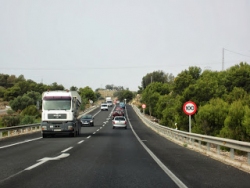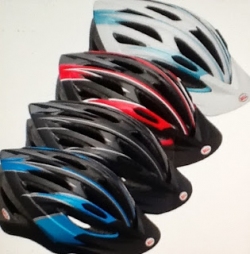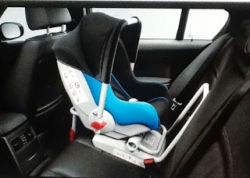The DGT - Directorate General of Traffic, have drafted a plan of nine new traffic rules, of which I have listed seven, which has the consensus of 95% of the lower house and will be presented to Congress today - there is no definite date when these changes will come into force, but according to the Director it will be "immanent".
 Speed Limits: These will be modified dependant on the road type. The most controversial is the increase to 130 km per hour on some stretches of motorway, but according to Maria Segui it "will be exceptional and restricted and only on sections where there is a good layout and surface conditions" - that really helps doesn´t it! On roads less than 6.5 metres wide the limit will be lowered from 100 to 90 km per hour and on others it will be reduced to 70 km per hour, when there is a longitudinal mark that separates the two directions. They are also proposing reducing the limit to 30 km per hour in Towns and Cities on single lane roads.
Speed Limits: These will be modified dependant on the road type. The most controversial is the increase to 130 km per hour on some stretches of motorway, but according to Maria Segui it "will be exceptional and restricted and only on sections where there is a good layout and surface conditions" - that really helps doesn´t it! On roads less than 6.5 metres wide the limit will be lowered from 100 to 90 km per hour and on others it will be reduced to 70 km per hour, when there is a longitudinal mark that separates the two directions. They are also proposing reducing the limit to 30 km per hour in Towns and Cities on single lane roads.
 Bicycles: The proposal that all cyclists will be required to wear a helmet by law... the most controversial change to the Highway code. Surprisingly there is opposition to this proposal - it was pointed out that no other European country has such a ruling despite scientific evidence showing the benefits of wearing a helmet and their effectiveness at reducing head injuries if involved in a traffic accident. Cycling associations fear that it will decrease the number of those using bikes. Cyclists will also be allowed to ride on the pavement where it is OVER three metres wide.
Bicycles: The proposal that all cyclists will be required to wear a helmet by law... the most controversial change to the Highway code. Surprisingly there is opposition to this proposal - it was pointed out that no other European country has such a ruling despite scientific evidence showing the benefits of wearing a helmet and their effectiveness at reducing head injuries if involved in a traffic accident. Cycling associations fear that it will decrease the number of those using bikes. Cyclists will also be allowed to ride on the pavement where it is OVER three metres wide.
Seatbelts: Compulsory with the exception when reversing to park. Up until now certain categories were exempt including those with certain medical conditions, taxi drivers, delivery drivers, drivers and passengers of emergency service vehicles and driving instructors - I never knew that and thought that everyone had to wear one!
 Child Seats: Minors under 135cm are NOT allowed to sit in the front - they must ALWAYS be seated in the rear. Children under the age of 4 must be in an appropriate car seat for its weight. Ideally groups 0 (carriers from zero to 10kg), 0+ (chair - zero to 13kg) and 1 (seat 9-18kg) should be facing the opposite direction of travel - rear facing that means, if the system allows. According to studies carried out by the RACE - Royal Automobile Club of Spain "travelling in the opposite direction reduces the risk of injury to the child by 75%". It is the responsibility of the DRIVER to ensure that all passengers are wearing the appropriate safety devices - ignorance is no excuse. Failure to ensure that a child is appropriately seated could invalidate any claims on your car insurance in the case of an accident. This is most important if you are hiring a car whilst on holiday. If the seatbelt cannot pass over the shoulder without touching the neck then they must use a booster cushion.
Child Seats: Minors under 135cm are NOT allowed to sit in the front - they must ALWAYS be seated in the rear. Children under the age of 4 must be in an appropriate car seat for its weight. Ideally groups 0 (carriers from zero to 10kg), 0+ (chair - zero to 13kg) and 1 (seat 9-18kg) should be facing the opposite direction of travel - rear facing that means, if the system allows. According to studies carried out by the RACE - Royal Automobile Club of Spain "travelling in the opposite direction reduces the risk of injury to the child by 75%". It is the responsibility of the DRIVER to ensure that all passengers are wearing the appropriate safety devices - ignorance is no excuse. Failure to ensure that a child is appropriately seated could invalidate any claims on your car insurance in the case of an accident. This is most important if you are hiring a car whilst on holiday. If the seatbelt cannot pass over the shoulder without touching the neck then they must use a booster cushion.
Radar Detectors: The amendments strictly forbids any ·radar detection mechanisms"
Drugs: New salivary test for the detection of drugs whilst driving.
Motorhomes: For the first time will deal with parking, which until now has been at the discretion of each town. Now vehicles can only park within bays big enough and may NOT go over the boundary of the bay nor dispose of any fluids or connect to any supplies, unless at a designated and authorised camper park.


Seatbelts: Compulsory with the exception when reversing to park. Up until now certain categories were exempt including those with certain medical conditions, taxi drivers, delivery drivers, drivers and passengers of emergency service vehicles and driving instructors - I never knew that and thought that everyone had to wear one!
 Child Seats: Minors under 135cm are NOT allowed to sit in the front - they must ALWAYS be seated in the rear. Children under the age of 4 must be in an appropriate car seat for its weight. Ideally groups 0 (carriers from zero to 10kg), 0+ (chair - zero to 13kg) and 1 (seat 9-18kg) should be facing the opposite direction of travel - rear facing that means, if the system allows. According to studies carried out by the RACE - Royal Automobile Club of Spain "travelling in the opposite direction reduces the risk of injury to the child by 75%". It is the responsibility of the DRIVER to ensure that all passengers are wearing the appropriate safety devices - ignorance is no excuse. Failure to ensure that a child is appropriately seated could invalidate any claims on your car insurance in the case of an accident. This is most important if you are hiring a car whilst on holiday. If the seatbelt cannot pass over the shoulder without touching the neck then they must use a booster cushion.
Child Seats: Minors under 135cm are NOT allowed to sit in the front - they must ALWAYS be seated in the rear. Children under the age of 4 must be in an appropriate car seat for its weight. Ideally groups 0 (carriers from zero to 10kg), 0+ (chair - zero to 13kg) and 1 (seat 9-18kg) should be facing the opposite direction of travel - rear facing that means, if the system allows. According to studies carried out by the RACE - Royal Automobile Club of Spain "travelling in the opposite direction reduces the risk of injury to the child by 75%". It is the responsibility of the DRIVER to ensure that all passengers are wearing the appropriate safety devices - ignorance is no excuse. Failure to ensure that a child is appropriately seated could invalidate any claims on your car insurance in the case of an accident. This is most important if you are hiring a car whilst on holiday. If the seatbelt cannot pass over the shoulder without touching the neck then they must use a booster cushion.Radar Detectors: The amendments strictly forbids any ·radar detection mechanisms"
Drugs: New salivary test for the detection of drugs whilst driving.
Motorhomes: For the first time will deal with parking, which until now has been at the discretion of each town. Now vehicles can only park within bays big enough and may NOT go over the boundary of the bay nor dispose of any fluids or connect to any supplies, unless at a designated and authorised camper park.

